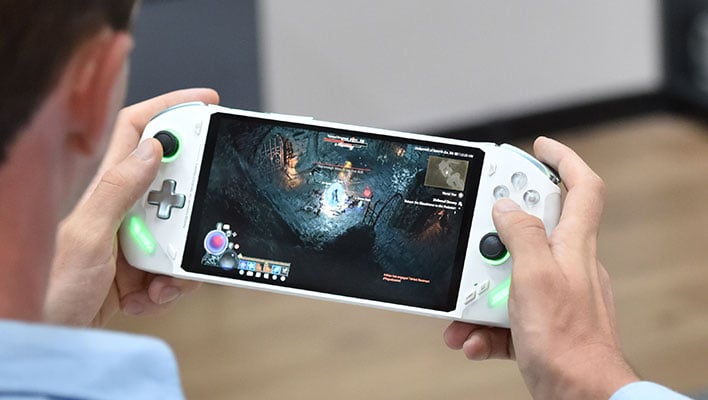OneXFly's Sleek And Ultra-Portable Zen 4 Gaming Handheld Is Up For Preorder

Handheld PC gaming consoles are still a niche market in the grand scheme of things, but it's one that is beginning to expand in meaningful ways. In addition to Valve's Steam Deck (which you can pick up in refurbished form for a discount) and the ASUS ROG Ally, we now have the OneXFly with a thinner design that OneXPlayer hopes will make it stand out from the crowd.
This is the same Zen 4-based (Phoenix) console we wrote about last week as having a "surprisingly low price" to go up against those other consoles. We also ruffled a few feathers with that description, based on some of the comments to that article. So, let's start there.

The OneXFly is now available to preorder (technically, to crowdfund) on Indiegogo starting at $739 for the base model. Baseline specs call for 16GB of LPDDR5 memory and a 512GB of PCIe 4.0 SSD (7,109MB/s reads, 6,316MB/s writes), in addition to the Ryzen 7 7840U processor (Zen 4, 8C/16T, 3.3GHz to 5.1GHz, 24MB L2+L3 cache) with integrated Radeon 780M (RDNA 3, 12 CUs, 2.7GHz) that comes standard on all configs.
A 7-inch display with ultra-narrow bezels, 1920x1080 resolution, 120Hz refresh rate, 450 nits of brightness, and 100% coverage of the sRGB color space is as a standard amenity as well. Same goes for the dual Harman Kardon speakers, joystick and button layout with a pair of programmable macro buttons, customizable RGB lighting, 48Wh battery with included 65W GaN charger, I/O ports (2x USB4, 1x USB 3.2 Type-A, 1x 3.5mm audio, 1x microSD 4.0), and Windows 11.
The baseline specs are most comparable to the ROG Ally that sells for $699.99. On paper, the OneXFly has the hardware advantage in a few areas including faster RAM (7500MHz versus 6400MHz), a bigger battery (40Wh), USB4 connectivity, and a more portable design—it measures 263.6 x 98.25 x 22.6mm and weights 580 grams.
Portability is what OneXPlayer is really trying to emphasize with the OneXFly. The ROG Ally measures 39mm thick and weighs 608 grams, while the Steam Deck is 49mm thick and weighs 669 grams.

The cost of enhanced portability and some hardware bragging points amounts to a $40 premium over the ROG Ally and $90 more than the top-end Steam Deck, which is based on Zen 2 (CPU) and RDNA 2 (GPU). So why did we deem the OneXFly as launching at a "surprisingly low price" when we wrote about it last week? Simply put, the vast majority of powerful handhelds we've seen since the Steam Deck launched have been unable to compete at all on pricing.
ASUS emerged as a rare exception with the ROG Ally, and now so has OneXFly. It's not easy to compete in price with titans like ASUS and Valve, and while we never had a specific price in mind for the OneXFly, we wouldn't have been shocked if it debuted north of $800. And it very well might once it exits Indiegogo (OneXPlayer lists the OneXFly's MSRP at $939 for the base model), at which point the bang-for-buck proposition would greatly diminish.
Whether the OneXFly is actually a good buy or not, we'll reserve judgement until when/if we have a chance to review it. In the meantime, if you're already sold on the OneXFly and/or want to claim early bird pricing, you can head to its Indiegogo page and placed your crowdfunded preorder. Those who do so within the first 48 yours will get a free silicone protective case.


